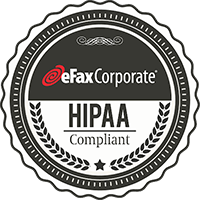Are Hybrids Just a Compromise
Hybrid is among the favorite adjectives in the marketing world. We all have positive connotations of hybrid—hybrid cars are good for the environment & give you the best of both worlds: The power of a gasoline engine with the economy of an electric motor. While many true hybrid solutions do offer a better combined solution, sometimes “hybrid” is just a convenient re-label of two conjoined products, features or services; the corollary to best of both worlds is that you also get the worst of both worlds.
The definition of what constitutes a hybrid offering can become a moving target that all too often is adapted to fit a vendor’s particular product & service offerings, to the point that the product or service is simply rebranding or repositioning of an existing product. Consider the mortgage industry. In 2007, adjustable rate & interest only mortgages were labeled as irresponsible lending tactics largely responsible for the national housing bust—a way for people to get in over their heads on properties that they really couldn’t afford. As rates stabilized their popularity waned. Well guess what’s back: that’s right, the same types of loans with variable payments, but now they’re called hybrid loans: fixed for a short period then fluctuating with the market.
The high-tech world is not immune to this branding for the moment mentality. Software developers have fully embraced cloud computing, developing more and more applications like CRM, data & document storage, and faxing as hosted cloud services. Yet for established vendors there is the concern that these new initiatives will cannibalize their existing customer base for on premise applications. The solution? Rebrand on premise software licenses as ”private cloud” and sell a subscription to a similar service hosted in the public cloud. Voila: instant hybrid solution (or ongoing maintenance and support costs combined with a monthly service fee, depending on your perspective.)
Software applications that run on your PCs or in-house servers may be headed for obsolescence, but that’s no reason to stop paying support and maintenance fees. Simply subscribe to a related cloud service to augment your long-in-the-tooth hardware and/or software investment.
Under the hybrid label, the pitch for this model is flexibility, redundancy and scalability. When your server-based application is down or can’t accommodate new users or processing volumes, simply switch on the cloud service. It’s a compelling message to IT organizations that have struggled with the outsourced services model. Concerns about security, lack of control and integration with legacy applications are starting to give way, but there is still the lingering issue—If it isn’t on my servers how can I control and protect it.
Skilled marketers prey upon this fear, uncertainty and doubt (FUD) to promote a message of conservatism: Don’t fly blindly into the cloud, make a few low altitude, low risk flights first.
But let’s examine the IT reality of hybrid cloud models. Hybrid can mean maintaining dual systems, negating one of the core benefits of hosted services: IT is still responsible for maintaining an application on company servers. Only now they need to integrate it with the “fallback/overspill” cloud solution. The other core benefit of hosted services is cost savings; don’t look at core business applications as a capital investment; treat them as leased services. Yet with the hybrid model you have both the capitalized cost and maintenance combined with the monthly subscription.
What, did you think marketing was about: making less money for the vendors?
To be certain, there may be applications where it makes sense to have a true hybrid public/private cloud model. For a data analytics application, for example, a federate search component may perform best with integrated components in a private and public cloud. It behooves IT however, to investigate the reasons (and the party that benefits most) from such an arrangement.
- Is the internal component hosted in a private cloud, or is it a rebranded server application with connectivity to an external cloud component? It isn’t the idea of a cohesive public & private cloud model that vendor’s are promoting: it’s the public cloud/private application, and that’s when problems ensue. CRM applications come to mind. Initially it was thought that core customer information would remain on server or mainframe silos, while “new” contact information could be ported to an external system. Today security and functionality are at the level that even the most complex ERP systems can function effectively in a pure cloud model.
- Is the internal component an existing server-based program that is near end of life? IT is accustomed to making judgments on whether it’s time to upgrade an application or change course. A good example is telephony. At some point there was a clear cost/quality/benefit equation that indicated VoIP was a better solution than analog telephone lines. Pilot projects with non-critical communications ensued, but the concept of merging old and new technologies never occurred.
- Are the proposed benefits of the hybrid solution really benefits of moving to the cloud? Many companies promote their hybrid solution as “cloud-enabling” an existing server-based application. The benefits cited may be no additional capital costs, ease of implementation, scalability and freeing up IT resources. Of course you would realize all these benefits by moving an application completely to the cloud, while also removing on-going support and maintenance costs of the existing server-based application.
- Are the reasons for maintaining on premise components red herrings? If the reasons given for maintaining the server software include application integration, security and autonomy of controlling the application, investigate to see if these are real issues. For example, if you feel that corporate data would be jeopardized in a cloud environment—or that you would lose control by hosting part of the application in a hosted environment—there is something intrinsically wrong with the proposed solution.
Like any IT decision, choosing the platform structure for a core business application requires looking beyond vendor claims and marketing buzz words. There may be systems that make sense to run in a multi-hosted environment, but do your homework to ensure the proposed hybrid solution offers real value.











